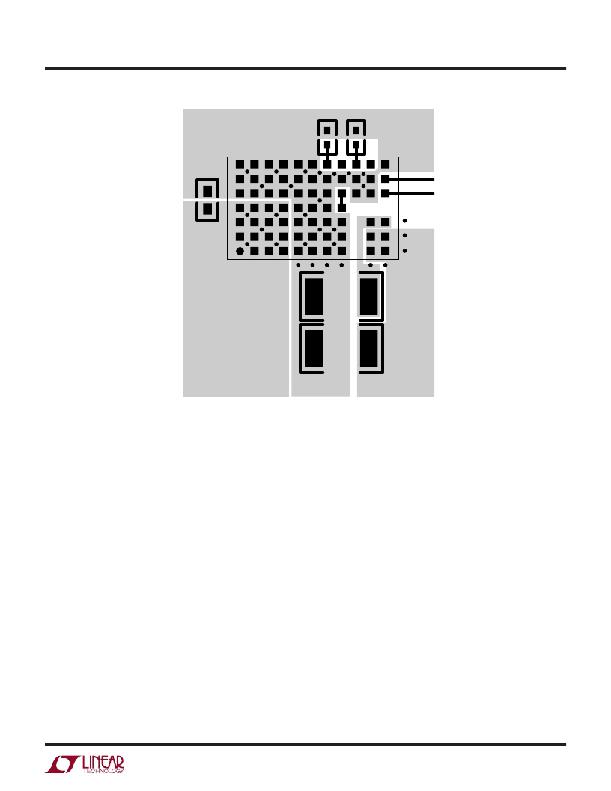- 您现在的位置:买卖IC网 > Sheet目录320 > DC1597A (Linear Technology)BOARD EVAL LTM8031

LTM8031
APPLICATIONS INFORMATION
GND
C OUT
AUX
BIAS
FIN
SYNC
RUN/SS
V IN
OPTIONAL
FIN
CAPACITOR
V OUT
C IN
GND
8031 F03
Figure 3. Layout Showing Suggested External Components,
GND Plane and Thermal Vias
4. Place the C IN and C OUT capacitors such that their
ground currents flow directly adjacent or underneath
the LTM8031.
5. Connect all of the GND connections to as large a copper
pour or plane area as possible on the top layer. Avoid
breaking the ground connection between the external
components and the LTM8031.
6. Use vias to connect the GND copper area to the board’s
internal ground plane. Liberally distribute these GND vias
to provide both a good ground connection and thermal
path to the internal planes of the printed circuit board.
Hot-Plugging Safely
The small size, robustness and low impedance of ceramic
capacitors make them an attractive option for the input
bypass capacitor of LTM8031. However, these capacitors
can cause problems if the LTM8031 is plugged into a live
or fast rising or falling supply (see Linear Technology
Application Note 88 for a complete discussion). The low
loss ceramic capacitor combined with stray inductance in
series with the power source forms an under-damped tank
circuit, and the voltage at the V IN pin of the LTM8031 can
ring to twice the nominal input voltage, possibly exceed-
ing the LTM8031’s rating and damaging the part. A similar
phenomenon can occur inside the LTM8031 module, at the
output of the integrated EMI filter, with the same potential
of damaging the part.
If the input supply is poorly controlled or the user will be
plugging the LTM8031 into an energized supply, the input
network should be designed to prevent this overshoot. Fig-
ure 4 shows the waveforms that result when an LTM8031
circuit is connected to a 24V supply through six feet of 24-
gauge twisted pair. The first plot (4a) is the response with
a 2.2μF ceramic capacitor at the input. The input voltage
8031fb
13
发布紧急采购,3分钟左右您将得到回复。
相关PDF资料
DC1693A
BOARD DEMO FOR LTM8047
DC1696A
BOARD DEMO FOR LTM8026
DC1724A
BOARD EVAL LTM8029
DCATV
SURGE SUPPRESSOR F COAX
DD1P030MA1
CONN PLUG 30POS 0.5MM
DD2P040MA1
CONN PLUG 40POS 0.5MM
DEIC421
RF MOSFET DRIVER 20 AMP
DEMO56F8013-EE
BOARD DEMO FOR 56F8013
相关代理商/技术参数
DC15B
制造商:FLORIDA MISC. 功能描述: 制造商:Florida Misc. 功能描述:
DC-15B
制造商:FLORIDA MISC. 功能描述: 制造商:Florida Misc. 功能描述:
DC-15FB
制造商:Pan Pacific 功能描述:
DC15KV
制造商:MURATA 制造商全称:Murata Manufacturing Co., Ltd. 功能描述:High Voltage Ceramic Capacitors (over 10kV)
DC-15MB
制造商:Pan Pacific 功能描述:
DC15PTE
制造商:NORTHERN TECHNOLOGI 功能描述:CONNECTOR
DC15ST
制造商:Northern Technologies Corporation 功能描述:
DC1600
制造商:INTRONICS 制造商全称:INTRONICS 功能描述:15 Watt Triple Output DC-DC Converters
